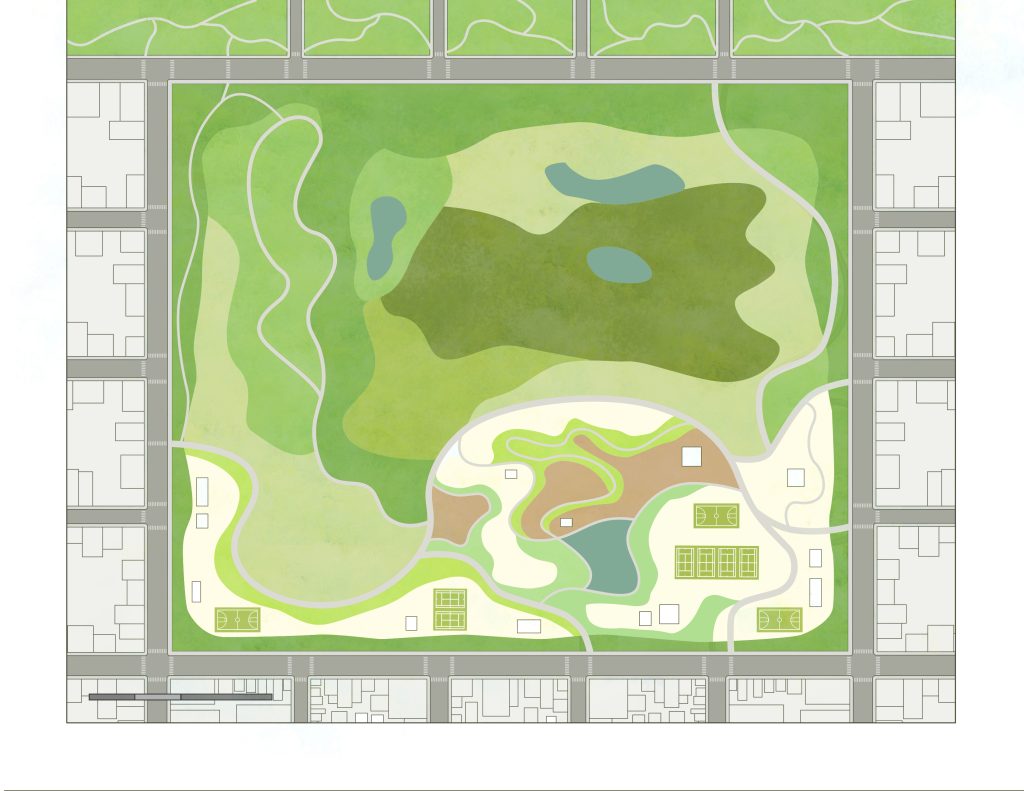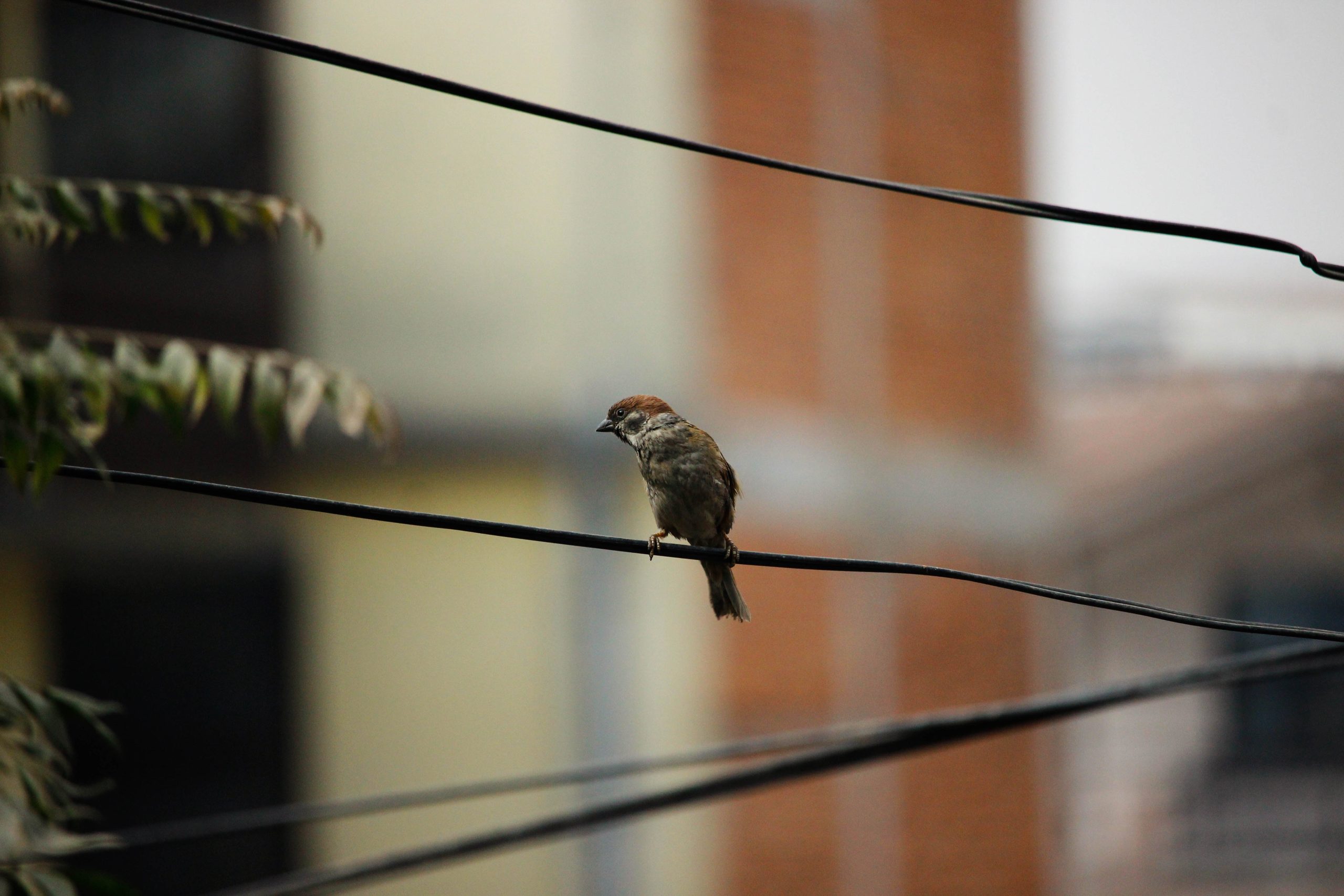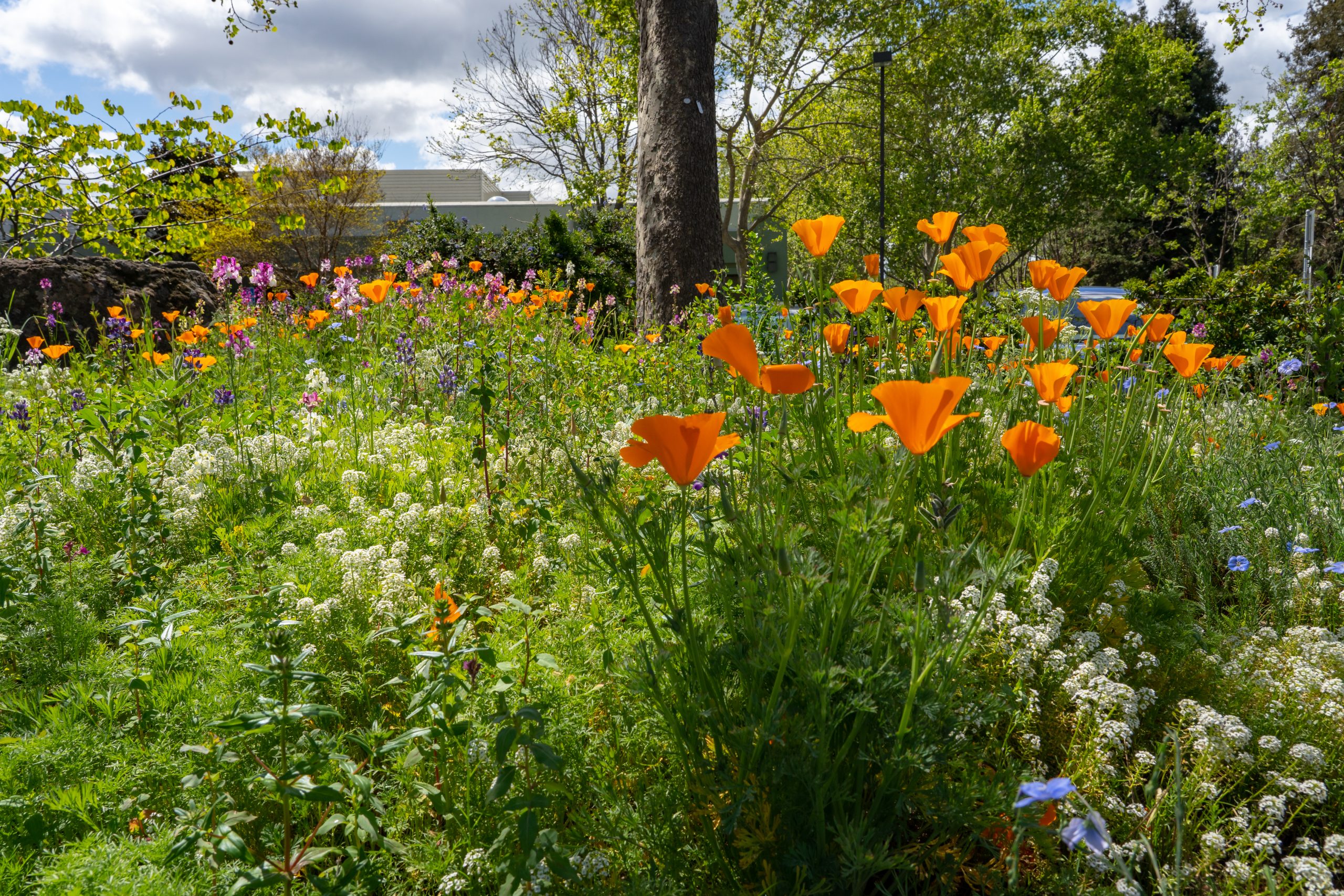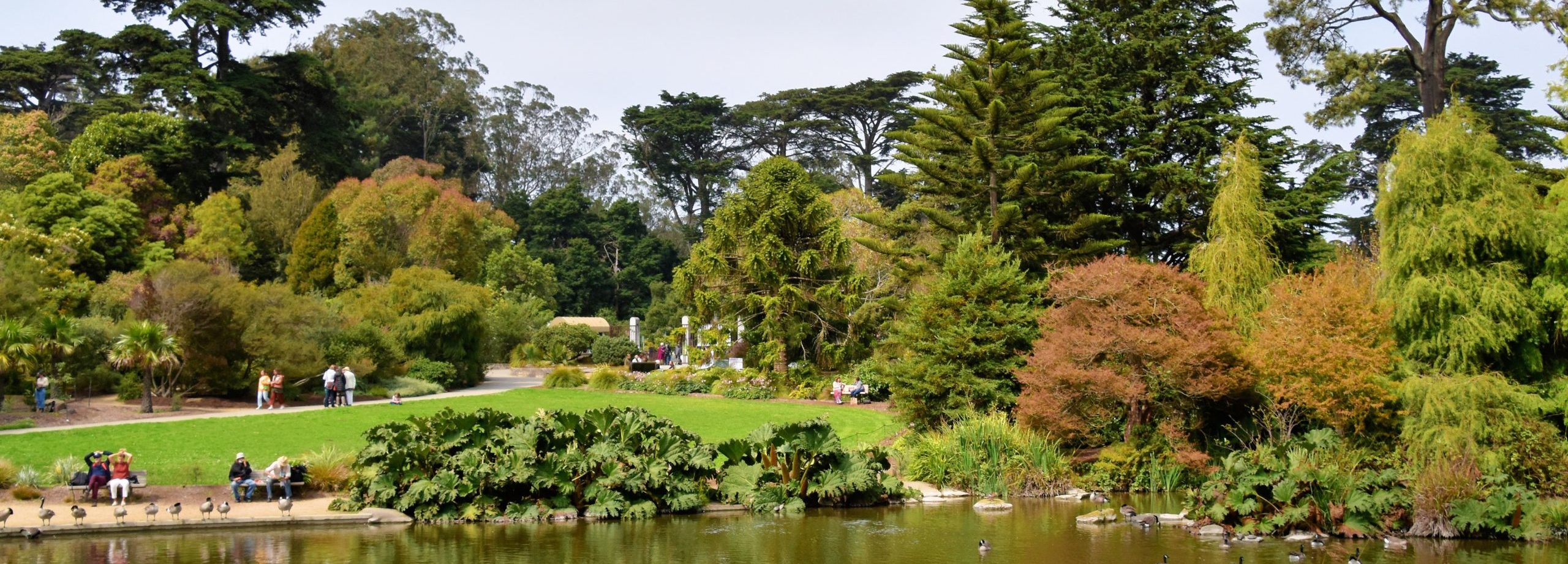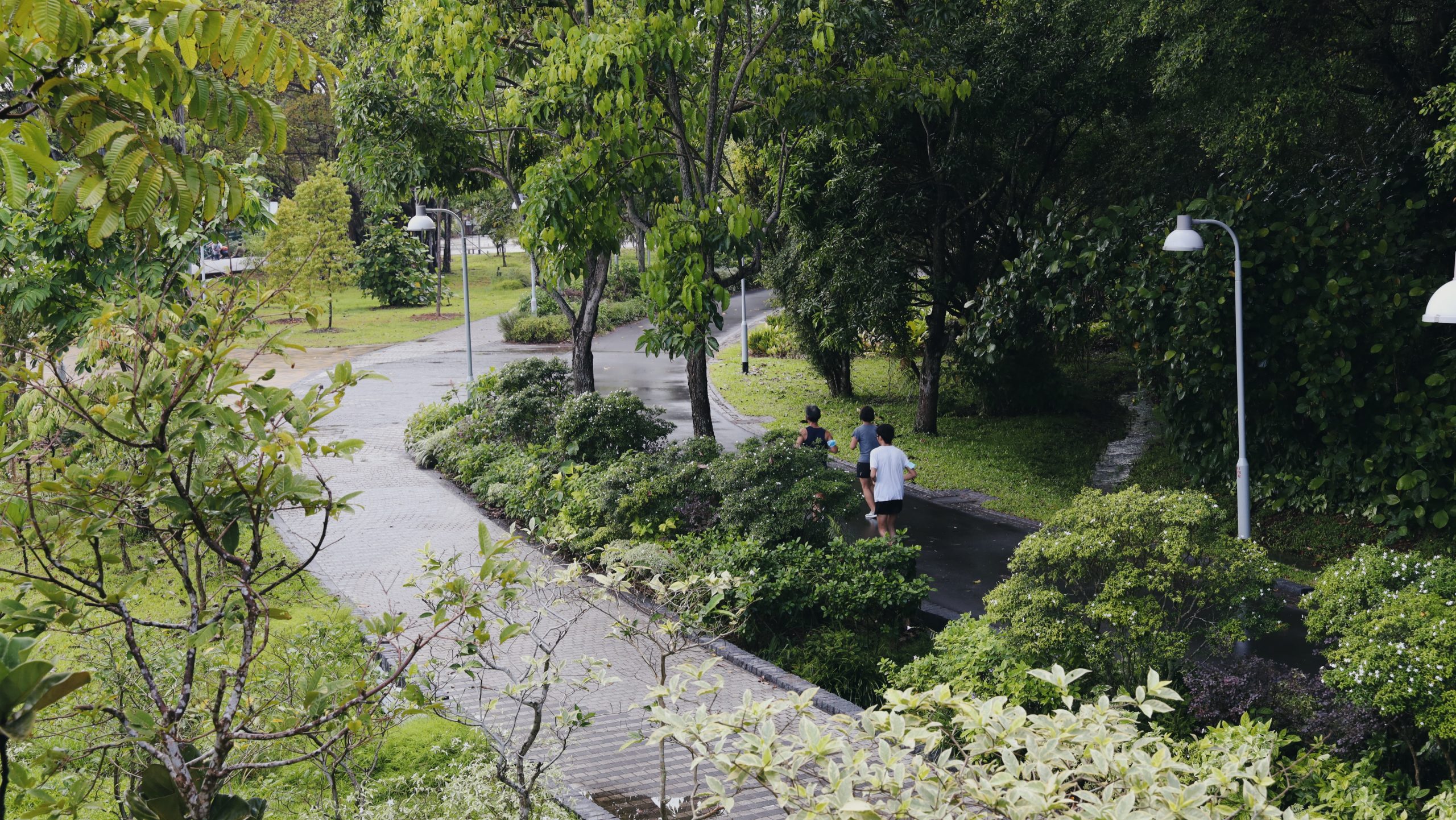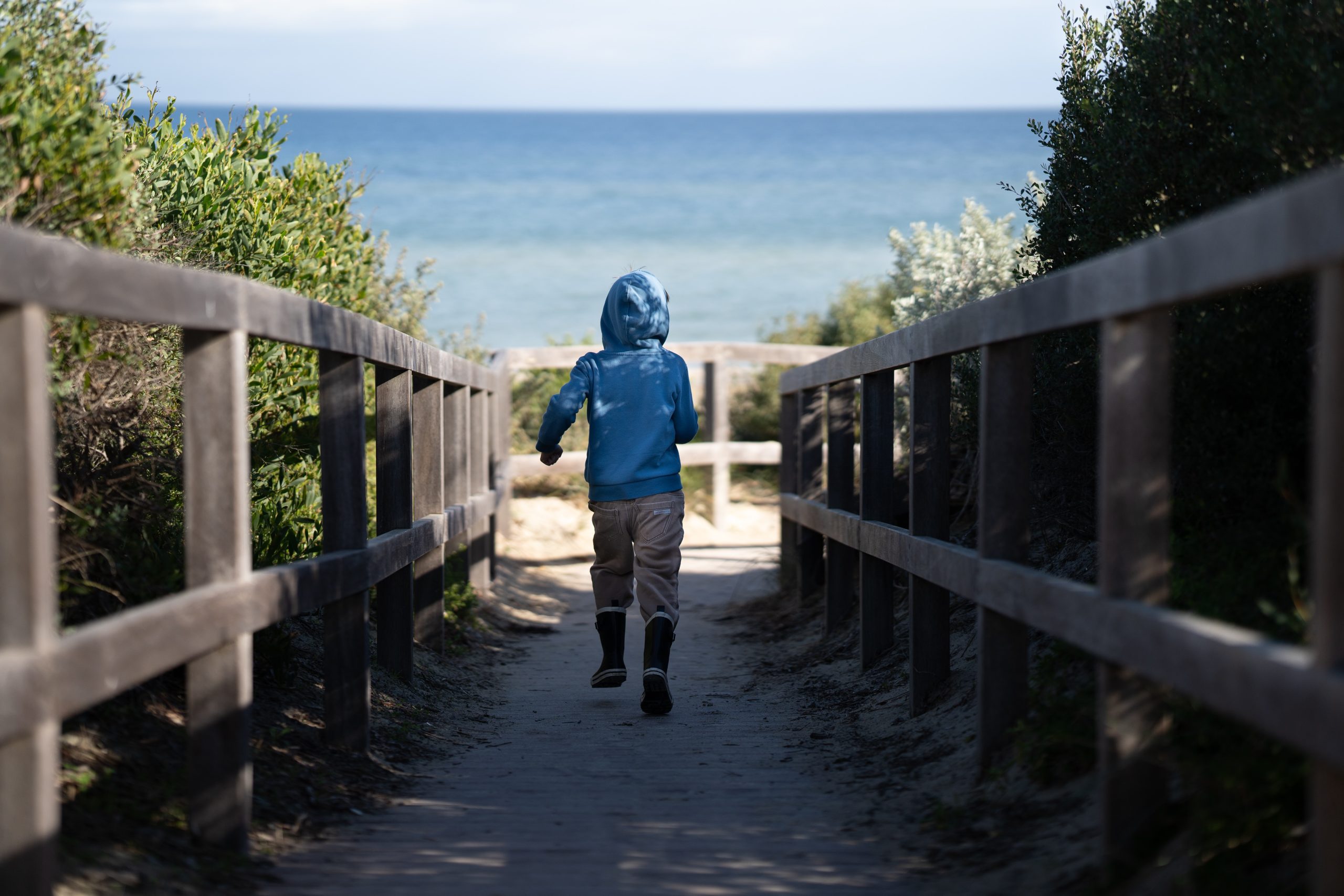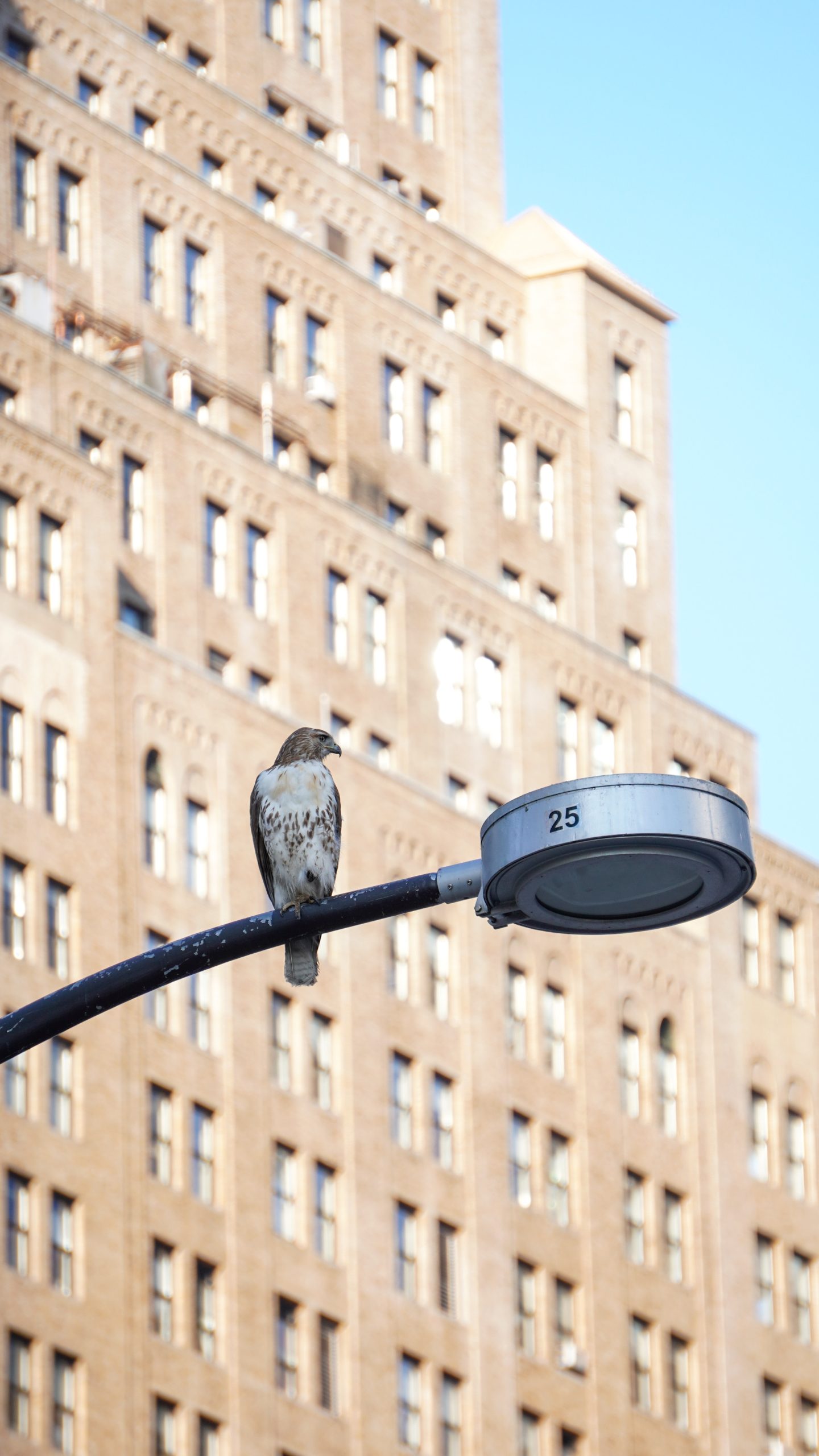Regional and City Parks
Image credits: Sergio Sala, Unsplash
Regional and city parks are contiguous public greenspaces within the urban fabric that serve either the entirety or significant portions of a city or region. In the context of this guidance, regional and city parks are defined as being at least 5 acres (~2 hectares) in size.
Biodiversity role:
Because of their size, large parks can contain large habitat areas that are relatively shielded from urban impacts and support rich mosaics of interconnected habitats that provide varied resources for wildlife, including lakes, wetlands and large forest patches.
Human health role:
Large parks have sufficient space to support a wide variety of human uses such as organized sports, walking and running, and immersive contact with nature. They are associated with greater physical, social and psychological health benefits than small parks.
Key tensions and tradeoffs:
Unregulated human access to park spaces can adversely affect habitat quality for wildlife, especially for urban intolerant wildlife. Buffer zones that separate high intensity human activities from sensitive habitats are likely to provide limited human functions, but are crucial in maintaining habitat quality for wildlife by reducing anthropogenic and other disturbances.
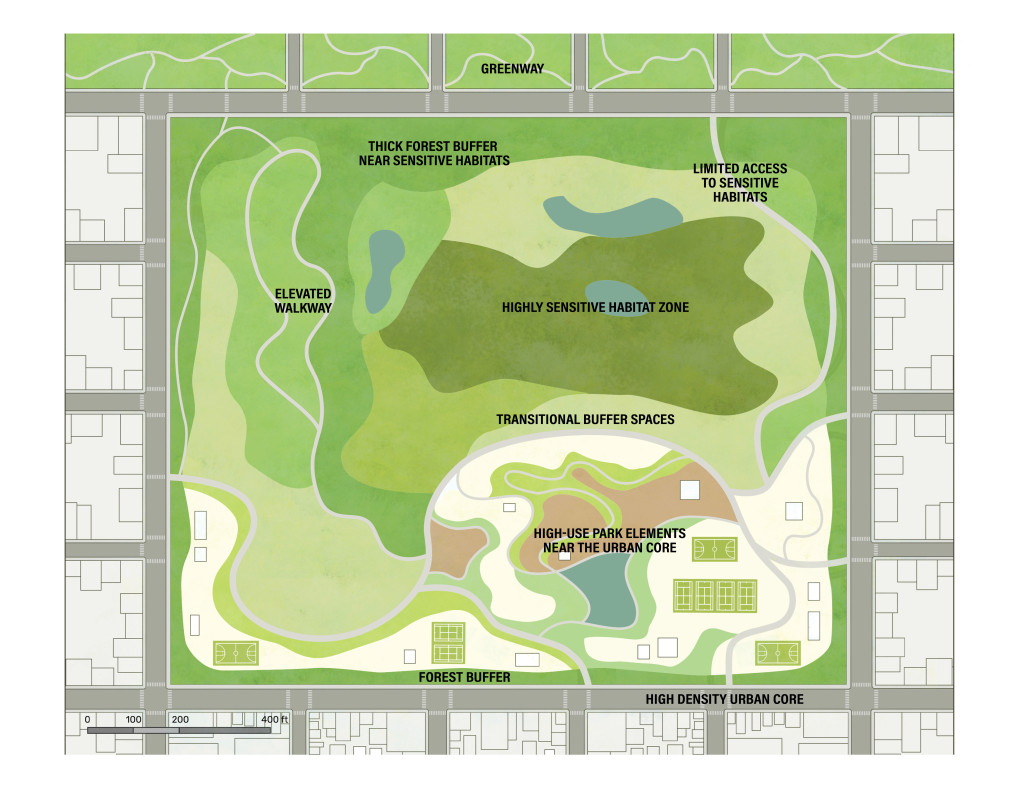
Habitat areas
Regional parks can accommodate habitat types such as lakes, wetlands, and dense forest that are uncommon in other urban greenspaces. A minimum of ~130 acres (~50 ha) is recommended to create interior habitat that supports urban intolerant wildlife.
Gradient of park programming
Develop a gradient of use intensity for park areas based on adjacent access, land uses, existing topographical characteristics and landscape features. High-use elements should be sited near park edges to increase public access and reduce disturbance while sensitive habitats should be located near the park center.
Buffers for sensitive habitats
To reduce disturbance, separate sensitive habitats from park edges and areas of high human use with transitional buffer spaces that host lower intensity use and/or physical barriers. Buffer widths can be based on the alert distance of species of concern.
Circulation design
Use variation in the width, length, density and connectivity of the park’s pedestrian circulation system to control the intensity of human use in different park spaces. Wide multi-use paths are appropriate for areas designated for intense human use, while narrow trails can be used to limit access to sensitive habitats.
Vegetated park edge
Plant tree alleys and low border vegetation around park edges with a high percent of canopy closure to provide shade in the summer for physical activities, while reducing external disturbances, such as traffic noise and pollution, to provide better foraging and breeding spaces for diverse bird species.
Nature immersion programs
Large parks can provide some rare opportunities in urban areas for nature immersion programs, such as outdoor education, therapy gardening, and urban forestry management, that require a sizable, programmable greenspace and other facilities.
Click on each image subtitles on the left to learn more
Habitat areas
Regional parks can accommodate habitat types such as lakes, wetlands, and dense forest that are uncommon in other urban greenspaces. A minimum of ~130 acres (~50 ha) is recommended to create interior habitat that supports urban intolerant wildlife.
Gradient of park programming
Develop a gradient of use intensity for park areas based on adjacent access, land uses, existing topographical characteristics and landscape features. High-use elements should be sited near park edges to increase public access and reduce disturbance while sensitive habitats should be located near the park center.
Buffers for sensitive habitats
To reduce disturbance, separate sensitive habitats from park edges and areas of high human use with transitional buffer spaces that host lower intensity use and/or physical barriers. Buffer widths can be based on the alert distance of species of concern.
Circulation design
Use variation in the width, length, density and connectivity of the park’s pedestrian circulation system to control the intensity of human use in different park spaces. Wide multi-use paths are appropriate for areas designated for intense human use, while narrow trails can be used to limit access to sensitive habitats.
Vegetated park edge
Plant tree alleys and low border vegetation around park edges with a high percent of canopy closure to provide shade in the summer for physical activities, while reducing external disturbances, such as traffic noise and pollution, to provide better foraging and breeding spaces for diverse bird species.
Nature immersion programs
Large parks can provide some rare opportunities in urban areas for nature immersion programs, such as outdoor education, therapy gardening, and urban forestry management, that require a sizable, programmable greenspace and other facilities.
Relevant Design Details
Design details are non-site specific strategies to include throughout the design and management of all urban greenspaces. Typical contexts and documents in which these strategies may be relevant include: (1) Project design and construction documents (ex. site plans and design details, planting schedules, and specifications); (2) Design standards and typical details for a park system or other greenspace type; (3) Operations and management plans.
s

